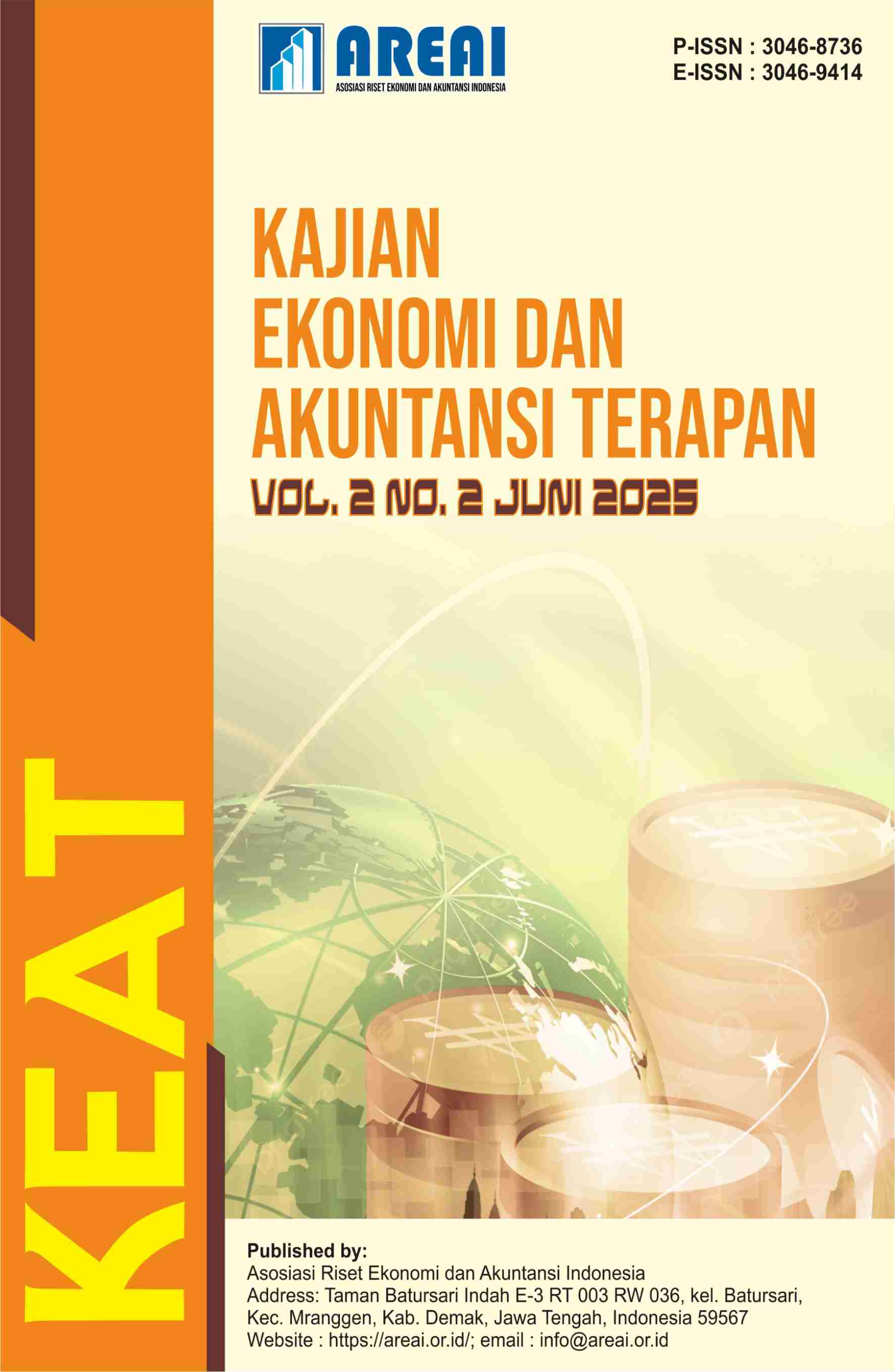Dampak Inflasi terhadap Daya Beli Masyarakat di Lampung Tahun 2024 dalam Perspektif Ekonomi Makro
DOI:
https://doi.org/10.61132/keat.v2i2.1036Keywords:
Inflation, Lampung, Macroeconomics, Purchasing PowerAbstract
This study aims to understand the impact of inflation on the purchasing power of communities in Lampung Province throughout 2024 from a macroeconomic perspective using a qualitative approach. The persistent fluctuations in inflation over the year have triggered various responses and adaptation strategies among the public, particularly within economically vulnerable groups. Through in-depth interviews with various informants—such as small business owners, housewives, and informal sector workers—this study finds that inflation has influenced consumption patterns, spending priorities, and how people manage their daily income. A noticeable decline in purchasing power is observed in essential needs and healthcare services. Common coping strategies include switching to alternative products, taking on debt, or reducing overall consumption. The findings suggest that inflation has not only economic implications but also social consequences, highlighting the importance of social protection policies and price stabilization efforts to maintain household economic resiliencej.
Downloads
References
Armand, F. (2003). Social marketing models for product-based reproductive health programs: A comparative analysis (Occasional Paper Series). Washington, DC. http://www.cmsproject.com
Bator, R. J., Bryan, A. D., & Schultz, P. W. (2011). Who gives a hoot?: Intercept surveys of litterers and disposers. Environment and Behavior, 43(3), 295–315. https://doi.org/10.1177/0013916509356884
Belair, A. R. (2003). Shopping for your self: When marketing becomes a social problem [Disertasi tidak diterbitkan]. Concordia University, Montreal, Quebec, Canada.
Chain, P. (1997). Same or different?: A comparison of the beliefs Australian and Chinese university students hold about learning. Proceedings of AARE Conference, Swinburne University. http://www.swin.edu.au/aare/97pap/CHAN97058.html
Hidayati, S. N. (2016). Pengaruh pendekatan keras dan lunak pemimpin organisasi terhadap kepuasan kerja dan potensi mogok kerja karyawan. Jurnal Maksipreneur: Manajemen, Koperasi, dan Entrepreneurship, 5(2), 57–66. http://dx.doi.org/10.30588/SOSHUMDIK.v5i2.164
Kotler, P., & Lee, N. R. (2009). Up and out of poverty: The social marketing solution. Pearson Education, Inc.
Lindawati. (2015). Analisis faktor yang mempengaruhi perilaku ekonomi dan kesejahteraan rumah tangga petani usahatani terpadu padi-sapi di Provinsi Jawa Barat [Tesis tidak diterbitkan]. Institut Pertanian Bogor. http://repository.ipb.ac.id/handle/123456789/85350
LPPSP. (2016). Statistik Indonesia 2016 (hal. 676). Badan Pusat Statistik. https://www.lppsp.go.id/index.php/publikasi/326
Norsyaheera, A. W., Lailatul, F. A. H., Shahid, S. A. M., & Maon, S. N. (2016). The relationship between marketing mix and customer loyalty in hijab industry: The mediating effect of customer satisfaction. Procedia Economics and Finance, 37, 366–371. https://doi.org/10.1016/S2212-5671(16)30138-1
Risdwiyanto, A. (2016, Februari 22). Tas kresek berbayar, ubah perilaku belanja? Kedaulatan Rakyat, 12.
Risdwiyanto, A., & Kurniyati, Y. (2015). Strategi pemasaran perguruan tinggi swasta di Kabupaten Sleman Yogyakarta berbasis rangsangan pemasaran. Jurnal Maksipreneur: Manajemen, Koperasi, dan Entrepreneurship, 5(1), 1–23. http://dx.doi.org/10.30588/SOSHUMDIK.v5i1.142
StatSoft, Inc. (1997). Electronic statistics textbook. StatSoft Online. http://www.statsoft.com/textbook/stathome.html
Downloads
Published
How to Cite
Issue
Section
License
Copyright (c) 2025 Kajian Ekonomi dan Akuntansi Terapan

This work is licensed under a Creative Commons Attribution-ShareAlike 4.0 International License.





